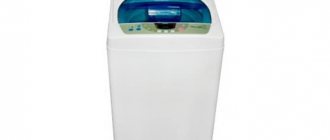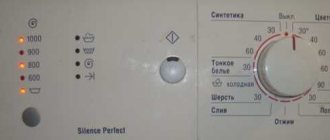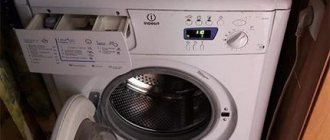Repairing a washing machine tank requires the use of a special sealant, which glues the dismountable parts together and ensures the moisture resistance of the main components.
Repair work involves disassembling the tank, diagnosing it, replacing consumables - hoses, bearings and gaskets, and assembling equipment, which requires certain knowledge, skills and tools, and therefore many prefer to send failed equipment to specialized workshops.
What is sealant used for?
Bonding and sealing the tank of an automatic washing machine (WMA) are considered forced but necessary processes that many owners face. Models from the brands Ariston, Indesit and some others are equipped with non-separable tanks, which are completely replaced in the event of a bearing failure. Such work costs large sums, and therefore not all SMA owners agree to them. Craftsmen can carefully saw the drum, remove and replace the bearing, and then glue the halves together. Washing machine sealant is used to seal and bond the tank.
Requirements for glued joints
When new bearings are installed, the question arises - how to repair a plastic tank that has been sawed in half. How to seal the drum to prevent leaks? What to choose - glue or sealant? It is better to use glue, since no sealant can provide the necessary strength characteristics of a glued structure.
Reliable connection of parts requires two operations:
- The halves are connected using bolts and nuts. To do this, holes are made in the plastic - evenly along the entire seam.
- The gap between the parts to be joined is filled with glue or sealant.
Not every composition will work. It is important to know what sealant to glue the halves together with. In this case, the operating features of the unit are taken into account:
- Strong vibrations - the connection must withstand severe mechanical loads.
- Extreme temperature conditions - the unit either heats up or cools down.
- Contact with aquatic environment. Including water supplied under pressure.
If the purchased composition fails you, leaks are possible. Then you will again disassemble the machine and fix the problem.
How to choose silicone?
The strength of the entire structure to a certain extent depends on the sealant, so its choice must be approached seriously and responsibly. If the transparent silicone does not set and the machine starts to leak, you will have to disassemble and re-glue the drum. Sealants differ in composition and method of application, which is why universal products are not always suitable for repairing washing machines. They also differ in color. There are both transparent or white, and colored, for example gray, sealants.
During operation, the SMA tank is exposed to various factors:
- In the modes of drawing water and spinning clothes, there is vibration.
- Temperature changes.
- As the drum rotates, centrifugal force acts on its walls.
- Pressure changes during washing.
Sealant for washing machines must be elastic, durable, not afraid of water and hold the parts together. Many manufacturers of washing machines advise purchasing silicones that contain a minimum amount of harmful substances, since during washing, which can last several hours, it comes into contact with water and clothing, which can lead to allergic reactions to individual components in the adhesive. In most cases, to repair the SMA tank, transparent silicones or universal sealants are used, which remain elastic for a long time and are suitable for various surfaces. The key to high-quality waterproofing is the elasticity of adhesives.
To repair the washing machine tank, you can use different sealants, both transparent and colored. More about some of them below.
Tips for choosing adhesive
The fixing composition must withstand the operating loads from the washing machine:
- temperature difference;
- high vibrations;
- pressure;
- do not allow water to pass through;
- have elastic properties.
Glue brands that meet the requirements:
Permatex 817.0 is a sealant that perfectly fills all joints, irregularities, and seams due to its fluidity. After exposure to the sealant, the seam is smooth, withstands pressure, shock, waterproof, temperature range from -62 °C to +232 °C. Gluing the halves together takes the entire tube. Price 175 rubles.
KRAFTOOL is an elastic sealant that gives a very strong, durable connection. Withstands strong vibrations and high temperatures up to +250 °C. It is popular among professionals for its high technical qualities and economical consumption. Cost 200 rubles.
Glue F is a powerful tool that fixes “to death.” Cost 700 rubles.
ABRO 11 AB-R is an ultra-resistant sealant. Withstands chemical and mechanical influences, a wide temperature range. The average cost is 350 rubles.
Washing machine repair technicians often use sealants and adhesives designed for cars.
What parts most often break in a tank?
In most cases, the following parts fail in a washing machine:
- Bearing. The operation of the entire mechanism largely depends on this detail. The cost of the bearing is low, but replacing it requires complete disassembly of the washing machine, which can lead to damage to the pin, shaft and other elements.
- Shaft. May become deformed during disassembly of the washing machine and replacement of bearings.
- Drain valve. It may become unusable due to blockages, which requires regular cleaning.
- Tank walls. May be damaged by centrifugal force, contact with the drum, or defective shock absorbers and bearings.
Why does the cuff get damaged?
The cuff is a rubber product, damage to which can be caused by the following factors:
- physical wear of the material, which occurs due to the presence of vibration loads during drum operation;
- rotting of the cuff due to the appearance of mold in the folds;
- mechanical impact with a sharp object during rotation.
It often happens that some factors overlap with others. With poor maintenance, namely lack of proper care after washing, mold may appear between the folds and rust may appear on metal elements.
This leads to the fact that during operation the rubber product cannot withstand the impact and is rubbed or broken. Hard water can have a negative impact.
Cuff damage is not as harmless as it might seem at first glance. Leaking rubber can lead to water entering electrical wiring elements, which can result in a short circuit.
This means that it is better to replace the cuff before it breaks. If there are places on it with significant wear, then you need to think about replacing it.
Repair of non-separable tanks
Work related to non-separable tubs of washing machines is always more labor-intensive, since they require cutting the equipment, eliminating leaks and gluing the halves. Since most manufacturers equip SMA with non-separable tanks, their repair is one of the most popular and complex procedures, carried out in several stages.
- Removing the front panel of the washing machine. Most often, it is secured with latches or bolts, which makes dismantling much easier. After the front panel, the top cover is removed.
- Removing the bottom panel, drum door and sealing collars. The bolts with which the front wall is secured are hidden behind the protective panels at the bottom and top. To easily remove it, just unscrew all the bolts, which is done with a regular screwdriver or wrench.
- Access to the drum opens after dismantling the front wall, so all that remains is to disassemble it and replace the damaged part. The location of the leak is determined by traces of corrosion, moisture or rust.
- It is impossible to disassemble the monolithic tank of a washing machine, so to eliminate the damage, carefully saw it with a grinder or by hand.
- The drum is held in place by springs, which cushion the equipment and keep it in place. They are attached to the drum and body at eight points and are removed using a screwdriver or wrench.
- The dismantled drum is simply removed from the housing and inserted back after the damage has been repaired.
- To replace the bearings, the wheel located at the base of the drum is disassembled, the screw holding all the parts together is knocked out, and the plastic is removed. The bearings themselves are quite easy to remove, but require a certain amount of force since they are installed tightly. New bearings are installed in place of old bearings.
- After replacing the parts, the main damage is eliminated and the entire structure is assembled. To glue the drum and tank together, sealants for washing machines, clamps and bolts are used to provide additional fixation of the parts.
Procedure and features of work
Before starting work, you must drain the water from the machine. It's more convenient to work together.
To get to the tank and drum you need to remove from the unit:
- Back, top cover, powder receptacle, front panel with circuit board.
- We remove the rubber band: open the plastic or metal latches, take out the clamp, and remove the rubber band.
- We remove all attached parts (drive belt from the pulley power supply to the heating element, motor, lower pipe).
- Place the washer on its side and remove the shock absorbers.
- Return to its original position and remove the tank with the drum through the top cover, without tearing the existing rubber bands.
- Free the tank from gravity by removing the load.
- Remove the cuff.
We recommend watching a video on how to work with a tank:
How to glue halves
The tank is ready for further work:
- Unscrew the pulley.
- Place with the drum hole facing up.
- To ensure secure fastening, drill holes for bolts along the contour of the upper part, so that later the two halves can be combined.
- We cut with a grinder or a saw with small teeth.
- Separate the top from the bottom and remove the drum.
- We remove burrs and polish both parts.
- We are making repairs.
- We put the drum in place and put on the pulley.
- Generously lubricate the halves with a fixing agent along the edges of the contour.
- We combine the upper part with the lower one, making sure that the holes of the top and bottom coincide.
- We tighten the bolts.
- We are assembling the car.
- Sealant, glue dries from 12 to 24 hours.
How to fill a hole in a tank
Mechanical damage may cause a crack or hole to appear on the tank.
The scale of the disaster must be assessed. If the hole or crack is small, then take a soldering iron or a heat gun, sealant, a piece of plastic for a patch the size of the hole and a structure similar to the tank, a piece of sandpaper. Next, follow the instructions:
- Sand the repair area.
- Use a soldering iron to solder a piece of plastic.
- Fill with sealant.
- Leave to dry.
The crack is also glued together using a soldering iron and filled with sealant.
Nuances during disassembly
Depending on the type of car, the repair will take place differently, so the time for such a procedure will also differ.
Tools
To work with such a part, to solve the problem, it is important to have certain tools available:
- Screwdriver, screwdriver.
- Hammer.
- Pliers.
- Various hexagons.
Front-loading equipment
At the very beginning, the equipment is pulled out of the network, the drain hose is pulled out, and it is important to cut off access to water.
The device is disassembled as follows:
- The screws are unscrewed and the back wall is removed.
- They do the same in front.
- Remove the detergent compartment.
- Using a special screwdriver, remove the control; do not pull it out, but attach it to one side.
- Remove the cuff from the hatch.
- Remove all additional parts (clamp, wiring, etc.).
- Pull out the motor after removing all the wires.
- Remove the drum by pulling it up; you need to do everything carefully so as not to damage anything.
- Afterwards, everything that remains is also removed.
Equipment with vertical loading of laundry
Such devices are used more often, but they can also break. The drum is held on by screws and does not need to be pulled out:
- Unscrew the screws in front and behind the machine.
- Remove the side wall.
- Carefully remove the wires near the casing.
- Remove the screws and bolts that held the shaft.
- Pull out the drum.
Which equipment has a collapsible part?
There are certain types of machines from Electrolux and Indesit whose tanks are disassembled.
Typically, such equipment is very expensive and is classified as a premium segment.
To dismantle, pull out the part according to the above algorithm, and also unscrew the screws to separate the parts. Before applying the sealant, the parts are thoroughly cleaned of dirt and grease.
Varieties
Household appliance tanks are either collapsible or non-dismountable. The first ones have threaded connections. But the second ones consist of two parts that are attached to each other.
What type of tank is in a particular device can be seen when inspecting it or in the documents that come with the car.
Also, they differ in the material from which they are made.
Of steel
Today, such parts are rarely made, and if the car is automatic, then such an option will not be found in any model.
To protect the surface from rust, special enamel is applied to it, but it is susceptible to various mechanical influences and various chemicals, so it quickly loses its qualities.
Spare parts are also not sold from this material, which means that leaks will be difficult to clean.
Made of plastic
Machines for washing clothes and washing dishes with this type of part can often be found for little money.
The drum is made of polymers, to which other components are added.
Thanks to plastic, the total weight of the purchase will be less, while the level of strength is normal, the surface is not scratch-resistant and the drum does not make noise during operation.
But plastic parts have a short service life, as they are fragile and can break.
Made of stainless steel
Such parts are installed in expensive car models. They have a high price, but the quality is appropriate and last a long period of time.
Stainless steel tolerates water well, rust does not appear on it, and there is no need to use enhanced protection, it has good strength, and is not afraid of various chemicals and influences.
Among the disadvantages, it is worth mentioning the high cost, it works quite loudly and the total weight of the equipment is large.
Why gluing?
Manufacturers of automatic washing machines, for example Indesit or Ariston, put a “real pig” on the craftsmen by making the tank of their equipment non-separable. It is understood that the user must change this entire unit of the washing machine due to bearings or some other small detail. In Europe, anyone can do such nonsense, but in our country they will repair the unit anyway, and the fact that it is non-separable is unlikely to stop anyone.
As a result, the repair will be carried out, but the problem will be how to restore the tank after such a repair, because in order to get to the key parts we needed to saw it in half. The first thought is to seal the tank with sealant. But the sealant, no matter how good it is, will not provide sufficient structural strength. Conclusion: in order to reliably connect the two halves of a plastic tank, you need to twist them with bolts and nuts, and seal the gap between the halves of the tank with sealant, ensuring water resistance.
Experts advise not to skimp on sealant. After all, you must admit, it would be a shame to re-disassemble the washing machine tank and re-glue it if the junction of its two halves leaks.
If you are interested in more detailed information on how to repair a washing machine tank with your own hands, read the article of the same name on our website. It describes in detail, including, disassembling the tank and its further assembly.











